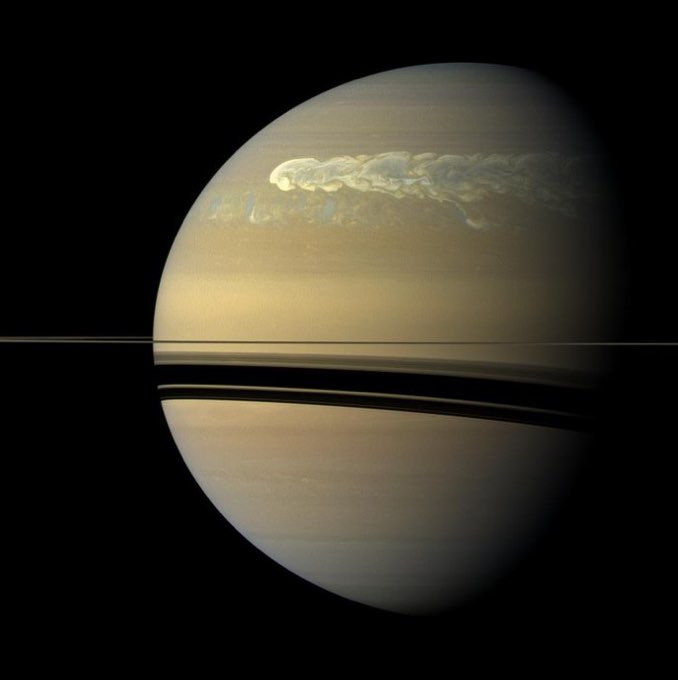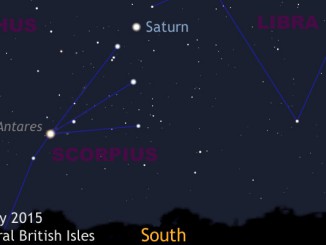In late 2010, one of the largest storms ever seen on Saturn developed with enormous ferocity, roiling through the ringed planet’s atmosphere and circling the globe like a snake eating its tail. The NASA/ESA Cassini spacecraft imaged the storm on multiple occasions, generating spectacular shots like this real-colour view captured on 25 February 2011, about 12 weeks after the storm erupted.
As it turns out, Saturn seems to store huge amounts of energy in its atmosphere over many decades, then releases it in a sudden burst, triggering powerful lightning storms every 30 Earth years or so. The massive disturbances are known as Great White Spots. The storm seen here lasted for several months and had noticeable effects on Saturn’s atmosphere for more than three years. Recent analysis of Cassini data showed the storm was so powerful it disturbed the atmosphere at Saturn’s equator tens of thousands of kilometres away.
“This disruption of the long-term, cyclical, continuing atmospheric patterns at mid-latitudes (dubbed informally by some as the planet’s ‘heartbeat’), is thought to be due ‘teleconnection’, which we also observe on Earth – when distant events within a climate system are somehow connected and can influence one another significantly,” the European Space Agency said in a release.




